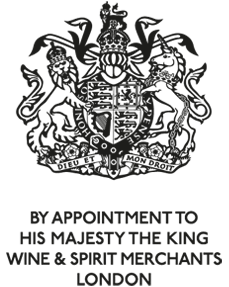Champagne Marguet
Available by the case In Bond. Pricing excludes duty and VAT, which must be paid separately before delivery. Storage charges apply.
Items 1-9 of 9
Item
Case format
Availability
Price per case
BBX marketplace
BBX
3 x 75cl bottles
BBX
1 case
£250.00
2018 Champagne Marguet, Avize, Grand Cru, Brut Nature
White
2018
Drink, youthful
Medium Bodied
Dry
13.0% Alcohol
BBX marketplace
BBX
6 x 75cl bottles
BBX
1 case
£280.00
Champagne Marguet, Shaman 18, Rosé, Grand Cru, Extra Brut
Rosé
Drink, at peak
Medium Bodied
Dry
12.5% Alcohol
BBX marketplace
BBX
3 x 75cl bottles
BBX
1 case
£190.00
New To BBX
New To BBX
BBX marketplace
BBX
3 x 75cl bottles
BBX
1 case
£195.00
2017 Champagne Marguet, Verzenay, Blanc de Noirs, Grand Cru, Brut Nature
White
2017
Drink, youthful
Medium Bodied
Dry
12.0% Alcohol
BBX marketplace
BBX
3 x 75cl bottles
BBX
1 case
£400.00
BBX marketplace
BBX
3 x 75cl bottles
BBX
1 case
£425.00
2012 Champagne Marguet, Sapience, 1er Cru, Brut Nature
White
2012
Drink, at peak
Medium Bodied
Dry
12.5% Alcohol
BBX marketplace
BBX
3 x 75cl bottles
BBX
1 case
£390.00
2011 Champagne Marguet, Sapience, 1er Cru, Brut Nature
White
2011
Drink, youthful
Medium Bodied
Dry
12.5% Alcohol
BBX marketplace
BBX
1 x 450cl six-bottle assortment case
BBX
1 case
£800.00
2018 Champagne Marguet (Ambonnay/Avize/Bouzy/Freedom/Verzenay/Ambonnay Rosé), Six-Bottle Assortment Case
2018
Drink, at peak
Full Bodied
Dry
13.5% Alcohol
BBX marketplace
BBX
3 x 75cl bottles
BBX
1 case
£380.00
2014 Champagne Marguet, Sapience, 1er Cru, Brut Nature
White
2014
Drink, youthful
Medium Bodied
Dry
12.5% Alcohol
BBX marketplace
BBX
1 x 450cl six-bottle assortment case
BBX
1 case
£1,000.00
2018 Champagne Marguet, Parcellaires Single Vineyards Horizontal, Six-Bottle Assortment Case
White
2018
Drink, at peak
Full Bodied
Dry
13.5% Alcohol
BBX marketplace
BBX
3 x 75cl bottles
BBX
1 case
£600.00
New To BBX
New To BBX
2010 Champagne Marguet, Sapience Oenothèque, 1er Cru, Brut Nature
White
2010
Drink, youthful
Medium Bodied
Dry
12.5% Alcohol


Champagne Marguet is located in the village of Ambonnay, also known as the heartland of Grand Cru Pinot Noir. This family property was founded in 1870, and fifth-generation member Benoît Marguet-Bonnerave remains at the helm today.
Benoît has fundamentally changed the direction of the family business, having converted operations to biodynamic viticulture in 2009. He strives relentlessly to nurture energy in all his cuvées following the rhythmic cycles of nature, as well as cosmic and lunar cycles. Some of his methods are far from conventional – as are his wines, which are some of the most highly-prized and expressive in the region.
His sensitivities and skill in the vineyards are famous amongst Champagne’s vigneron community. Even Krug have employed his talents in farming their Ambonnay Pinot Noir. His cuvées and lieu dits are both contemporary and evocative, standing as beautiful expressions of terroir. Timeless, radical and insanely delicious, these wines offer value, purity, and quality.